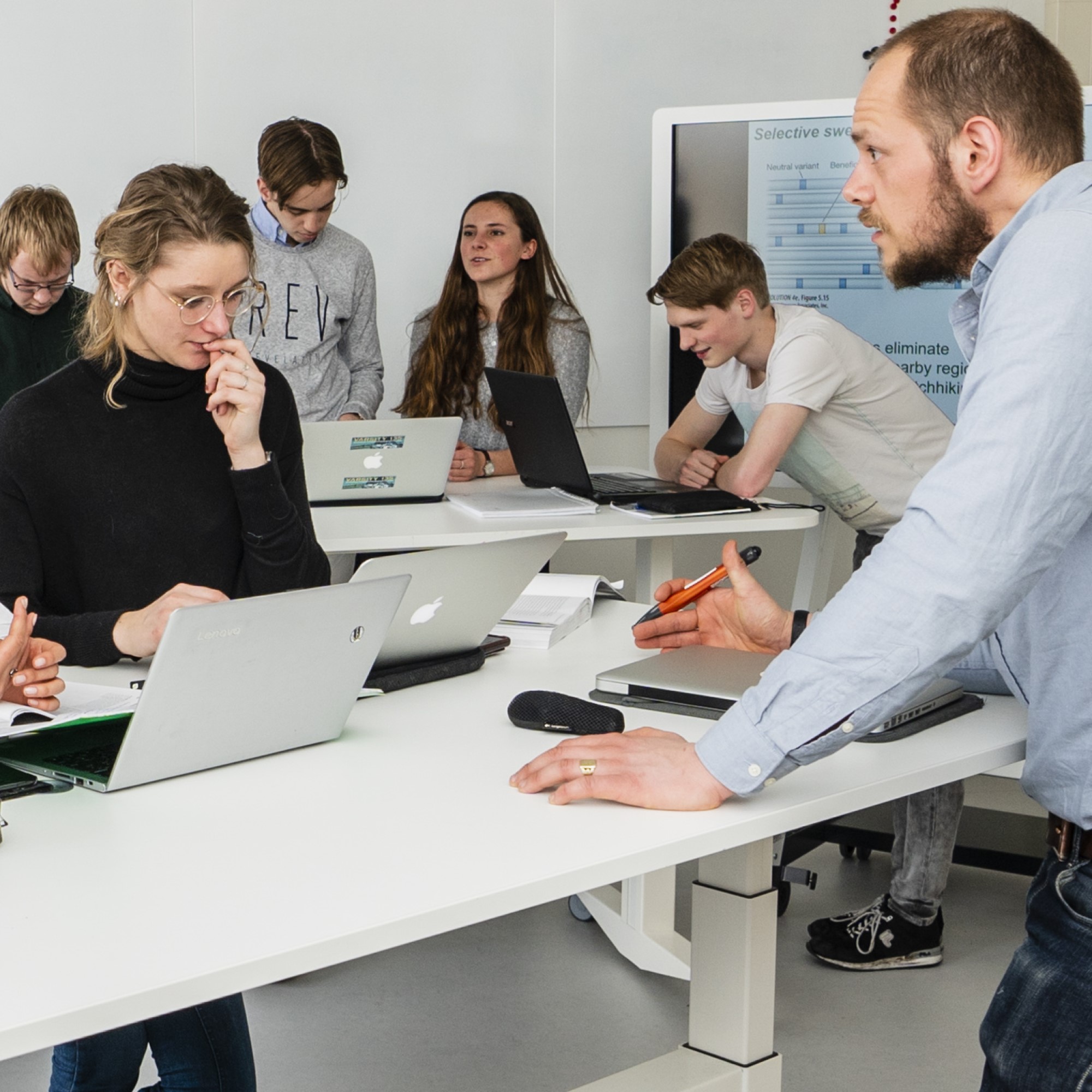News
Looking back on inspiration cafe – Inclusive science teaching
The inspiration café on 14 September was hosted by Arthur Bakker, Aitana Bilinski, and Sonja El Yandouzi. The theme of this café was diversity and inclusion: Key challenges for science education. Arthur Bakker shed a light on the importance of inclusive science teaching by showcasing data from interviews with students on their perception regarding inclusion in higher education, which was followed by the development of a two-session workshop to benefit inclusive science teaching. We got to experience part of this workshop first hand.
What is the problem?
The research team found that key topics in inclusive science teaching encompass issues in special provision for students with disabilities, limitations of internationalization in higher education, experiences of microaggressions in the educational environment, and student comments on teaching and the curriculum. A previously conducted study suggested that teacher training can promote self-awareness and critical reflection, which benefits the gradual transformation of inclusive teaching practices (Reynaga-Peña et al., 2018). This is where the Inspiration Café comes in: the café gave us an idea of what such teacher training would look like by allowing us to partake in one part of the inclusive science teaching workshop.
A two-part workshop to help teachers
Since the entire workshop would be quite lengthy, the inspiration café focussed only on a small part and provided the opportunity to create awareness by having us discuss a scenario we either found interesting, or is in line with a situation we have encountered ourselves. We completed this part in groups of four or five.
The workshop kicks off with a session on the implementation of the reflective cycle, as well as a discussion about inclusion-related dilemmas teachers face in class. Here, focus on a dilemma regarding language barriers, something that is probably considered a common occurrence. A group member explained that he had some trouble understanding the question of a foreign student before, feeling bad about having them repeat themselves several times and still struggling to provide an answer. Finding a fitting solution to this situation would therefore be very helpful.
The session continued with an assignment about our own awareness regarding this dilemma, and to consult students or colleagues about it. Most of us admitted to not having considered how it would make a student feel during such a lengthy misunderstanding and considered this something we could all improve on. To complete this assignment we also had to write down a brief reflection to get complete understanding of the issue and how to handle it.
The second session would have room for discussing assignments, and focuses on the concept of microaggressions and its involvement in dilemmas.
A case study of language barriers
During the session we discussed the case study that aligns with the previously mentioned situation:
“A foreign student raised their hand during a lecture. The teacher struggled to understand what the student was trying to ask and was hindered by their accent. After asking to repeat themselves three times the teacher dismissed the question and told the student to stop by at the end of the class, only for them to never ask questions again. The student evaluation at the end of the course revealed that this student felt ignored and did not experience the freedom to ask questions.”
This scenario is probably familiar to most of us. So, how can we deal with such a scenario? The group came up with several solutions, but after further debate each solution appeared to have an unforeseen downside. An example of this was the impression it could leave on the foreign student: Asking a student to come back after class excludes them from the group and creates a different barrier, rather than them being able to freely ask a teacher questions as intended. So what does work? We ended up with several solutions to dealing with this case study.
- Be transparent about the issue, preferably with humour. By making fun of yourself the mood is lightened and the barrier will be less pronounced. This however still requires the student to either contact the teacher at a separate time after class.
- Write an email to the student or approach them after class to show your interest in them and their questions. This helps the student to feel seen and heard.
- Make use the whiteboard to help conceptualise the question by writing down key words.
We agreed that the final solution ended up being the one that had the least downsides and offered the most fitting response to the case study. However, every situation asks for a different solution – and as a teacher you might be more comfortable with specific solutions as well. The best thing you can do is understand the issue, and being receptive to finding a solution that works for you.
Are you interested in learning more about inclusive science teaching, or are you interested in the full, two-part workshop in any form or way? Get in contact with Arthur Bakker via email by using the following address: a.bakker4@uu.nl
Author: Tamara Schoonderbeek, masterstudent Science Education and Communication at Utrecht University
Reynaga-Peña, C. G., Sandoval-Ríos, M., Torres-Frías, J., López-Suero, C., Lozano Garza, A., Dessens Félix, M., … & Ibanez, J. G. (2018). Creating a dialogic environment for transformative science teaching practices: towards an inclusive education for science. Journal of Education for Teaching, 44(1), 44-57.

